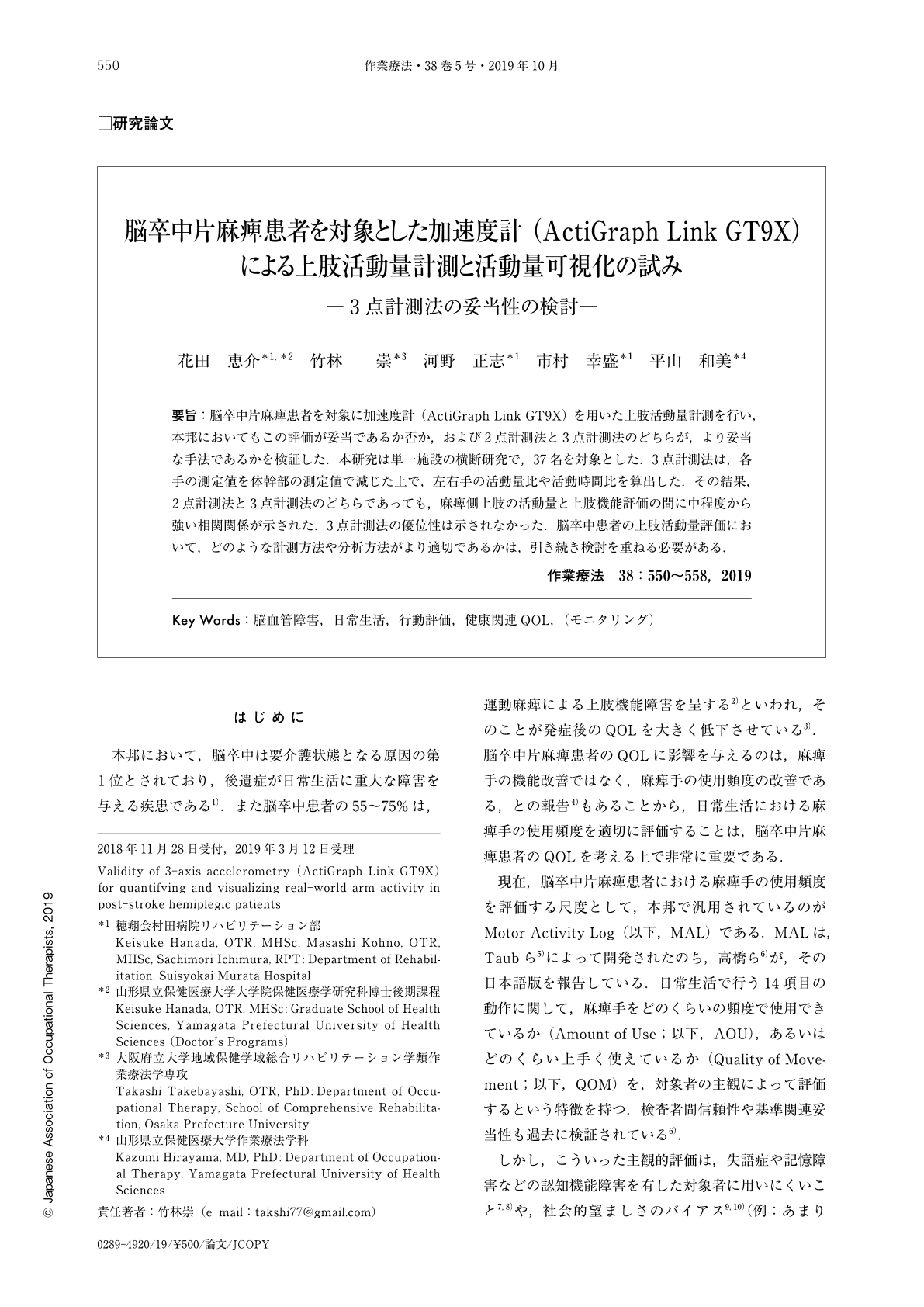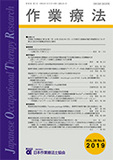Japanese
English
- 販売していません
- Abstract 文献概要
- 1ページ目 Look Inside
- 参考文献 Reference
- サイト内被引用 Cited by
要旨:脳卒中片麻痺患者を対象に加速度計(ActiGraph Link GT9X)を用いた上肢活動量計測を行い,本邦においてもこの評価が妥当であるか否か,および2点計測法と3点計測法のどちらが,より妥当な手法であるかを検証した.本研究は単一施設の横断研究で,37名を対象とした.3点計測法は,各手の測定値を体幹部の測定値で減じた上で,左右手の活動量比や活動時間比を算出した.その結果,2点計測法と3点計測法のどちらであっても,麻痺側上肢の活動量と上肢機能評価の間に中程度から強い相関関係が示された.3点計測法の優位性は示されなかった.脳卒中患者の上肢活動量評価において,どのような計測方法や分析方法がより適切であるかは,引き続き検討を重ねる必要がある.
This study examined the efficacy of accelerometry for monitoring real-world arm activity (ActiGraph Link GT9X) in stroke patients, and whether the monitoring by 2-accelerometers or 3-accelerometers is more appropriate. The study design was a cross-sectional single-center study. Thirty-seven subjects wore 3-accelerometers (left hand, right hand and chest) and were monitored for 24 consecutive hours, and the activity ratio of the paretic hand was calculated using the value of each hand minus the value of the chest. Regardless of monitoring method, a moderate to strong correlation was shown between the activity ratio of the paretic hand and functional assessment. The 3-accelerometer monitoring was not shown to be superior to the 2-accelerometer monitoring. Which method best reflects real-world arm activity of stroke patients should be investigated.

Copyright © 2019, Japanese Association of Occupational Therapists. All rights reserved.


